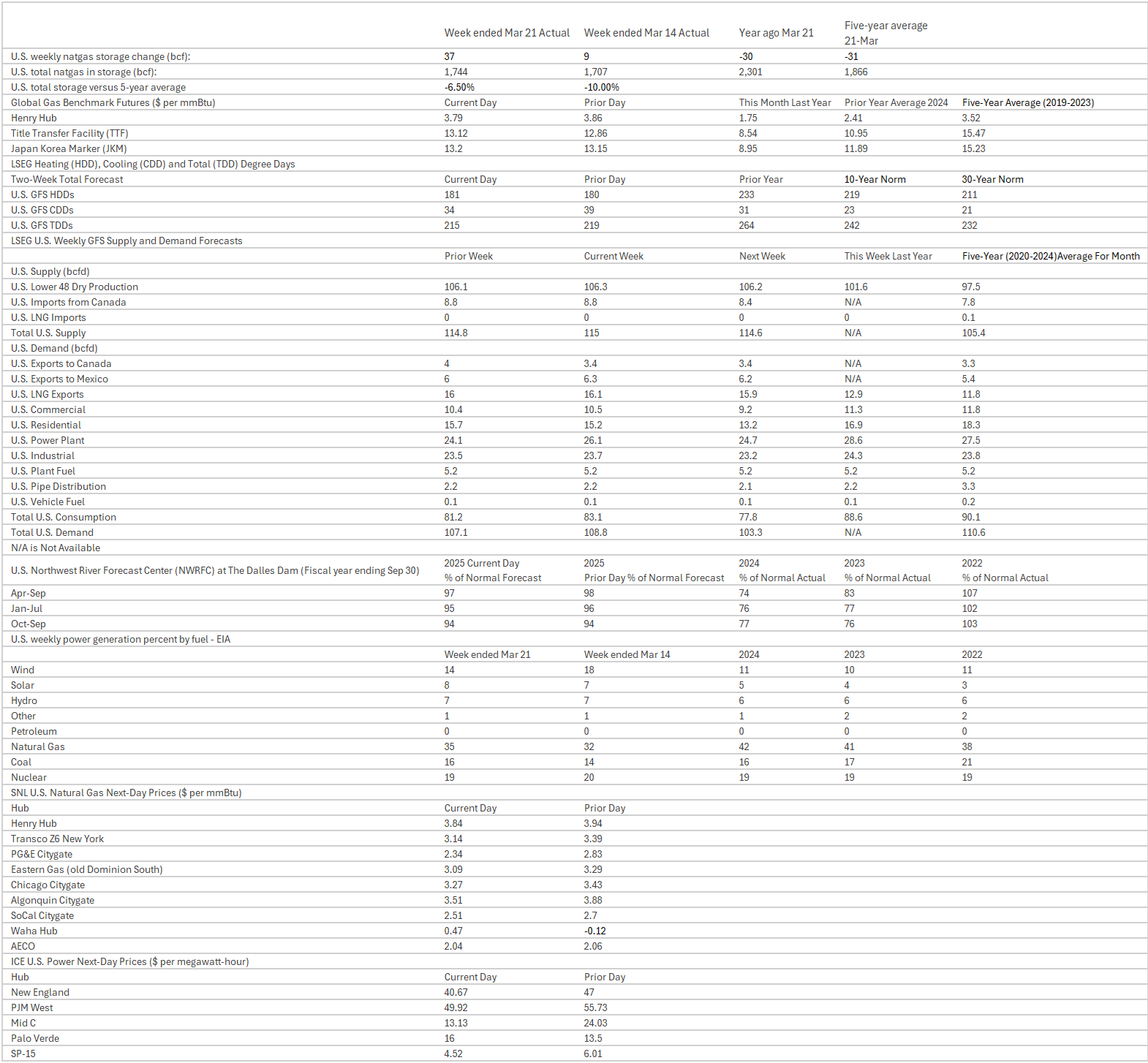
- US gas output on track to hit monthly record in March
- US LNG export feedgas set to hit monthly record in March
- US gas inventories on track for unusual build in March
March 27 (Reuters) – U.S. natural gas futures climbed about 2% on Thursday on a decline in daily output, record flows to liquefied natural gas (LNG) export plants and forecasts for more demand this week than previously expected.
On its last day as the front-month, gas futures for April delivery on the New York Mercantile Exchange rose 8.9 cents, or 2.3%, to settle at $3.950 per million British thermal units (mmBtu).
Futures for May , which will soon be the front-month, were trading up about 1.5% to around $3.93 per mmBtu.
Prices rose despite a report showing last week’s storage build was bigger than expected and forecasts for lower demand next week than previously expected.
The U.S. Energy Information Administration (EIA) said energy firms added 37 billion cubic feet (bcf) of gas out of storage during the week ended March 21.
That was bigger than the 25-bcf build analysts forecast in a Reuters poll and compares with a decrease of 30 bcf during the same week last year and a five-year average draw of 31 bcf for this time of year.
Some analysts said gas stockpiles were on track to increase in March for the first time since 2012 and only the second time in history.
Gas stockpiles, however, were still about 7% below normal levels for this time of year after extremely cold weather in January and February forced energy firms to pull large amounts of gas out of storage, including record amounts in January.
SUPPLY AND DEMAND
Financial firm LSEG said average gas output in the Lower 48 U.S. states rose to 106.0 billion cubic feet per day so far in March from a record 105.1 bcfd in February.
On a daily basis, however, output was on track to drop 2.3 bcfd over the past three days to a preliminary one-month low of 104.9 bcfd on Thursday. Traders noted preliminary data was often changed later in the day.
Meteorologists projected temperatures in the Lower 48 states would remain mostly warmer than normal through April 11.
With seasonally milder weather coming, LSEG forecast average gas demand in the Lower 48, including exports, will slide from 108.8 bcfd this week to 103.3 bcfd next week. The forecast for this week was higher than LSEG’s outlook on Wednesday, while the forecast for next week was lower.
Gas flowing to the eight big operating U.S. LNG export plants rose to an average of 15.8 bcfd so far in March, from a record 15.6 bcfd in February, as new units at Venture Global’s (VG.N) 3.2-bcfd Plaquemines LNG plant under construction in Louisiana entered service.
The U.S. became the world’s biggest LNG supplier in 2023, surpassing Australia and Qatar, as surging global prices fed demand for more exports due in part to supply disruptions and sanctions linked to Russia’s 2022 invasion of Ukraine.
Gas traded around $13 per mmBtu at both the Dutch Title Transfer Facility (TTF) benchmark in Europe and the Japan Korea Marker (JKM) benchmark in Asia.

Reporting by Scott DiSavino, Editing by Nick Zieminski and Richard Chang
Share This:




 CDN NEWS |
CDN NEWS |  US NEWS
US NEWS 
































COMMENTARY: Selected US States Offer Enormous Advantages for AI Data Centers – Yogi Schulz